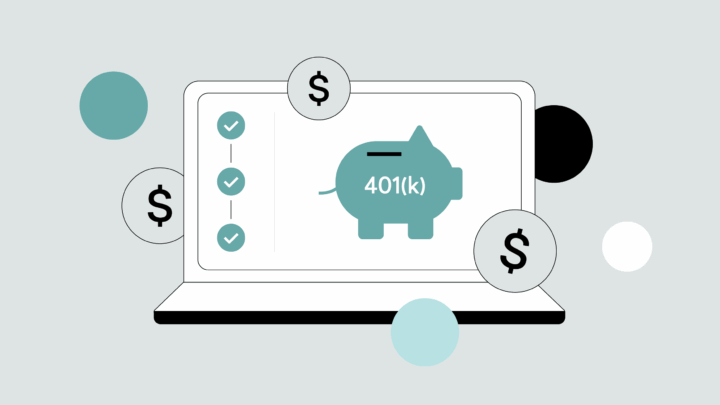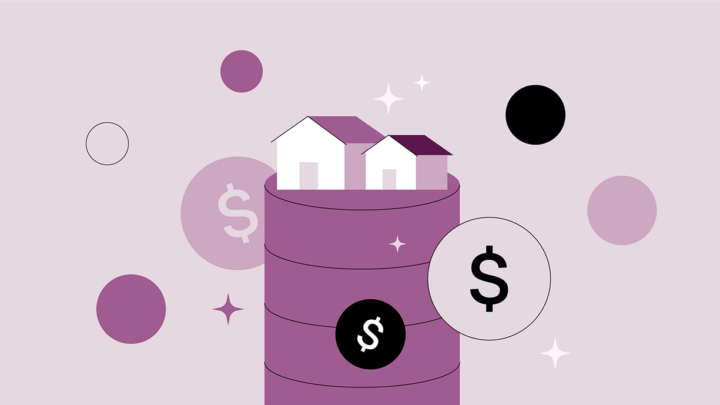
Physicians practice many skills on the job, but learning shouldn’t stop at what happens at work. One doctor on Sermo shares, “Managing finances is an important aspect of life and well-being, but it’s not routinely taught in school. Most physicians go through life without ever formally learning about financial planning, managing a budget, or basic principles of spending vs. investment vs. savings.”
Many physicians don’t maximize their investing potential. While financial illiteracy is a longstanding concern among medical professionals, conversations surrounding personal financial health are becoming more common—and for good reason. Wealth management prepares you for retirement and leads to a more confident day-to-day.
Here’s a roadmap to short- and long-term wealth management for physicians—part of a broader approach to health and wealth management.
How to manage wealth as a medical professional
Wealth-building principles are for everyone—including doctors. And one primary principle is to build a strong financial foundation before investing.
Below are a few steps to building a strong financial future, with some physician wealth management caveats for each.
Create a budget
Budgeting is a simple yet effective discipline of financial planning for doctors. While paper budgets work well for some, consider doing it digitally through a dedicated budgeting application. These apps make it easier to categorize spending and track every dollar. You Need a Budget, EveryDollar, and PocketGuard are three great options.
Build an emergency fund
Build an emergency fund that covers 3–6 months of basic living expenses. Place this fund in a high-yield bank account where it can accrue a small amount of interest while remaining liquid—meaning you can take out that money when you need it.
Manage debt
Physicians have more debt than most other professionals, with a debt-to-income ratio at sometimes 100%. While most enter medical school with a broad understanding of the profession’s financial tradeoffs, many underestimate how significantly student debt will impact their lives.
Research shows that it takes the average physician over a decade to pay off their student loans. Physicians also commonly take on additional personal debt following residency. And all forms of debt are directly at odds with long-term investing.
While it demands sacrifice, prioritize becoming debt-free. It’s more than okay to keep some forms of debt, like credit cards and mortgages, but paying high-interest debt will put you in a better position to save and invest for later. There are quite a few to prioritize and pay off debt—including the avalanche and snowball methods—so ask an advisor or financial planner to decide which is best for your situation.
Get a Health Savings Account
If you retire at 65, you may need approximately $413,000 in savings for lifetime healthcare expenses. While this figure may be lower if you have no dependents, it’s still a huge chunk of your lifetime spending. Health Savings Accounts, or HSAs, are a helpful way of making sure you have medical funds if you need them.
HSAs offer a triple tax advantage:
- Pre-tax contributions
- Tax-free growth
- Tax-free withdrawals for qualified medical expenses
The catch is that HSAs are typically offered as part of employer-sponsored healthcare plans, so they may not be available to you. Speak with your employer or financial advisor to learn more about your options.
Establish a retirement plan early
Depending on where you are in your career, retirement might feel far away. But the earlier you start planning and saving, the more your invested money can grow—and the more confidence you’ll have in your future.
A retirement plan should be a simple digitized document that outlines your current financial objectives and the practical steps to reach each one individually. Usually, long-term investing is at the top of the list.
The primary objective of long-term investing is to retire with a portfolio large enough to allow for a 4–6% annual withdrawal without eroding your principal. Or, as one Sermo member and anesthesiologist puts it, “My retirement planner says that every $1 million in savings will provide $40,000 a year as a rule of thumb.”
Why 4–6% withdrawals? Because the United States market returns 10% APY, on average across time. Your investment portfolio should either match or outperform the U.S. market, allowing it to grow as you withdraw a portion of its interest to fund your retirement lifestyle.
While 4% is the standard safe withdrawal rate (SWR), some choose to withdraw less if they retire with a large fund or have a frugal lifestyle. Another Sermo member speaks to this idea, saying, “My impression is that you can retire at any age if you only spend 0.75 to 1% of your saved amount per year. So if you have $1M, 1% is $10,000. $5M would yield $50,000 per year. That is extremely cautious but your money would likely last a lifetime.”
Investment strategies to build and manage wealth
To build wealth for retirement, allocate a percentage of your annual income to investments. Prioritize investment vehicles that are tax-advantaged, diversified, and historically viable. Here are a few good investment options:
Leverage tax-advantaged accounts
About 80% of U.S. millionaires invested in their 401(k)—a workplace retirement account that allows limited annual contributions. Both 401(k)s and Roth IRAs are sound investment vehicles because they’re tax-advantaged. While physicians typically benefit most long-term from maximizing their 401(k)s over Roth IRAs, speak with a financial advisor about the best approach for you.
Prioritize diversified, historically viable assets
Mitigate risk by investing in diversified assets and those with strong historical track records. Historically, assets that reflect the U.S. market return approximately 10% APY, on average. Beyond being diversified, many of these assets have track records extending 50 years or more.
S&P 500 equities, for example, have returned 10.13% APY since 1957. The S&P 500 mirrors the performance of 500 of the largest U.S. companies across sectors. Other examples of historically viable and diversified broad-based equities include the Dow Jones Industrial Average and the Wilshire 5000. Most healthcare 401(k) plans include these equities.

Physician retirement strategies
A Sermo member says, “Money management is essential, even if talking about money or thinking about money is sometimes considered greedy or stingy. Most physicians learn about managing money from their families of origin, which can often be useful—but for some, it can be dysfunctional.”
Investing for retirement isn’t greedy. It’s a way of meeting your short- and long-term needs. As you approach retirement, your focus should shift from growth-based vehicles to conservative, income-generating assets. This means your investments are less risky, keeping your money closer when you need it.
Common retirement income-generating assets include:
- Bonds
- Dividend-paying stocks
- Annuities
- Real estate investment trusts (REITs)
- Certificates of deposit (CDs)
All involve trade-offs. Across most income-bearing assets, the primary trade-off is liquidity for fixed payments. Many retirees are willing to exchange part of their nest egg for a steady income, provided they maintain a liquid emergency fund—as early withdrawals typically incur fees.
According to a Sermo survey, 30% of doctors want to retire between 60–65; 28% between 65–70; and 23% at 70 years or older. That means, for most, retirement may last 15 years or more. If you invest in income-generating assets, make sure you outlive your savings by investing a portion of your portfolio in other assets that are conservative yet offer historically reliable rates of return, like broad-based equities that reflect the U.S. market.
Hear what other physicians are saying about managing wealth for retirement
Wealth management for physicians looks different from one person to the next. One Sermo member, a family medicine doctor, says, “I could live on $40K in retirement, no problem.” And another member says, “I am 65. My wife and I live on $50,000/year with no problems. It all depends on what makes you happy. My ‘rich doctor friends’ are not doing any better with more money. We are worth over $4 million, but so what?”
To hear more from fellow physicians, join the conversation (for free!) on Sermo. Sermo is the world’s largest platform where physicians discuss a broad range of topics that matter most to them and their patients—and have a few laughs along the way.
Join a global community of 1+ million physicians.















